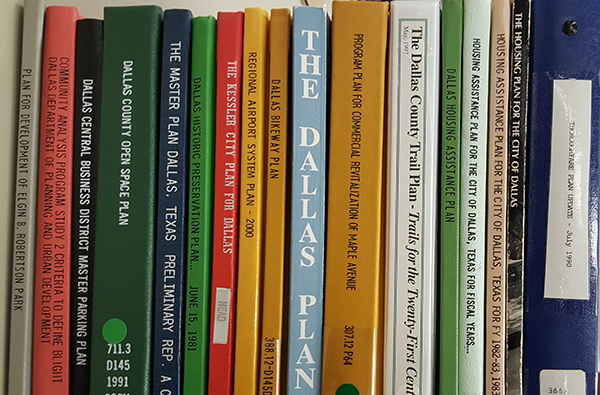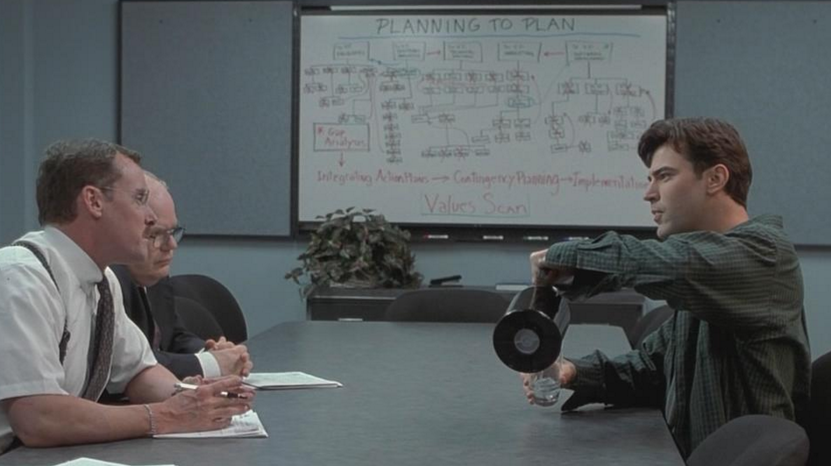Your new year’s resolutions are dead. It’s January 14, and you’ve already refashioned your new treadmill as a conveyor belt to get food from your kitchen to your couch without getting up. You failed. But that’s fine. It happens to everyone. Except probably Ryan Seacrest, it happens to everyone. It’s just human nature, which means it’s something we all have to overcome. The enthusiasm of making a plan has been lost to the harsh realities of actually making it happen.
We see it in our city all the time as well. This year we’re going to destroy blight, alleviate poverty, and end chronic homelessness. We enthusiastically attend meetings with fun “action steps” spelled out at the end. But like our new year’s resolutions, that eagerness doesn’t survive, and we finish with a low plan-to-action ratio. That’s a problem because we’ve made a lot of plans for the future of our city:
- CityMap
- Downtown 360
- Neighborhood Plus
- 2011 Bike Plan
- Grow South
- Dallas Complete Streets
- NCTCOG 2040
- Trinity Dream Team Plan
- DART 2030 Transit System Plan
We plan. We like to plan. Because it’s fun. We have a planning council. One of our suburbs is called Plano, and we have a movie set here that made famous the phrase ‘Planning to Plan’:
We have ‘dream’ teams, ‘visions’ for Dallas, and a festival of ‘ideas.’ But how many of these grand plans are ever achieved? We may dream big, but do we execute? I wanted to see what we could expect from the plans listed above, so I looked to the past to check some of the goals laid out in previous plans and see how we’ve done in actually implementing them:
1) Preserve Dallas History
Plan (1981 Historic Preservation Plan):
“With initial recognition of the importance of landmark preservation in Dallas, it seemed that the earlier preservation planning had a twofold purpose: 1) to save older and endangered landmark structures and 2) to save and stabilize older inner city neighborhoods”
Outcomes (2015):
88-Year-Old Building in Bishop Arts Demolished Because, Well, Dallas
Time Warner Cable says it needs to raze Victorian home in Cedars for hub site, parking
2) Improve Bike Infrastructure
Plan (1975 Dallas Bikeway Plan):
“a total of 515 miles of bikeway facilities are proposed for the Dallas area. Most of the bikeway will be constructed on several rights of way, but exclusive lanes for bicycles on city streets and bicycle facilities in mixed traffic will be used to maintain system continuity”
Outcome (2012):
It’s official: Dallas is still the (one and only) worst city for bicycling in the entire country
3) Increase Affordable Housing
Plan (1992 – Visions for Dallas):
“Dallas needs a civic goal to protect its most vulnerable citizens of the housing population….people whose lack of bargaining power in the real estate market make their housing situation precarious. [We must] seek solutions for lower income and affordable housing and accommodation for the homeless.”
Outcome (2015):
Lack of affordable housing leading cause of homelessness in Dallas, report finds
4) Utilize the Trinity River
Plan: (1984 Dallas Town Lake Plan):
“The plan calls for the maintenance of wetland areas and development of areas for wildflowers. The park would include picnic areas and recreation facilities including athletic fields, an archery range, an equestrian center, a golf driving range, areas set aside for kite flying and frisbee throwing, and special event areas. The park would also contain several miles of hike-and-bike trails”
Outcome (2015):
Sizing up the ‘avalanche’ of Trinity toll road opposition
5) Improve Walkability
Plan (2006 Forward Dallas):
“Policy Plan 5.1.1: Promote Pedestrian Friendly Streetscapes”
Outcomes (2014):
Study: Dallas is one of the worst ‘walkable urban’ cities in the country, but doesn’t have to be
6) Collaborate with Education Systems
Plan: (2000 Dallas Strategic Plan)
“Strategic Objective #2: We will build lasting alliances with schools, businesses and community organizations to support common educational challenges and opportunities in Dallas”
Outcomes (2015):
City and Dallas ISD share constituencies and goals, but collaboration is limited
7) Raise Citizen Engagement
Plan (1992 – The Dallas Plan):
“the degree of voter participation-particularly in long-range decisions such as bond programs-has decreased in recent years…the need for more participation by citizens in all sectors of the city is clear as Dallas looks towards the future”
Outcome (2015):
Dallas Early Voting Numbers Show Very Few People Give a Damn
8) Increase Home Ownership
Plan (1992 – The Dallas Plan):
“Policy Plan 28: Create additional opportunities for home ownership throughout the City and increase renters’ participation as stakeholders in this community.”
Outcomes (2015):
D-FW has one of the country’s lowest homeownership rates
There’s a lesson here. These are just plans. They’re just pieces of paper. They’re the equivalent of getting a sticky note out on January 1 and writing “I’m going to run 5 miles every day this year.” That’s the easy part. Execution is hard. As the fantastically named Helmuth von Moltke the Elder said, “No plan survives contact with the enemy.” Or as the equally venerable Mike Tyson said, “Everyone has a plan until they get punched in the face.”
We make shiny plans with renderings. We go to charrettes and place sticky notes on maps. We meet for hours at a stretch talking about data. That fools us into feeling like we’ve accomplished something. But we haven’t. So if you’re waiting around for a big plan to take care of your vision for the city, maybe you should take a cue from Jason Roberts. He started Better Block, which got a $775,000 grant from the Knight Foundation yesterday. He describes his goals for the foundation:
“People have grown weary of the traditional city planning processes that lay out 30-year watercolor visions that require billions of yet-to-be discovered funds to make the city of our dreams. But doesn’t everyone deserve a great place to live, right now? And are outrageous sums really necessary to make these places a reality?
“A major goal of the Better Block Foundation is to demystify the planning process and redefine it according to human terms, so that citizens can transform places into sustainable communities that foster economic development and neighborhood equality.”
I’m not trying to bash plans. They are a necessary step in achieving anything, and I believe our current plans have great potential to transform our city. But if you think the ideas contained within them are new, you’re wrong. I’ve checked. Every major plan we’ve had in this city’s history has the same strategies and goals. The Kessler Plan in 1910 talked about fixing our street grid, the Master Plan of 1945 talked about affordable housing and the bike plan of 1975 talked about building trails. There have been countless plans for the Trinity River, filling pages and pages of books. Exactly zero of them have been done. In the 23 years since The Dallas Plan made it a goal to increase home ownership, the ownership rate in the city has gone from 44 percent in 1992 to … 44 percent in 2015. And now we have another document with the same goal. How are we going to do better? What’s going to make our outcomes different this time? It’s not going to be because of more ideas, more planning, more brainstorming, more meeting, more thinking, more visioning, more charretting, more dreaming. It’s going to be because of more doing.
So if you think you’re the first person to have an idea for how to fix our city, chances are you’re not. But you might be the first one to actually do them.






